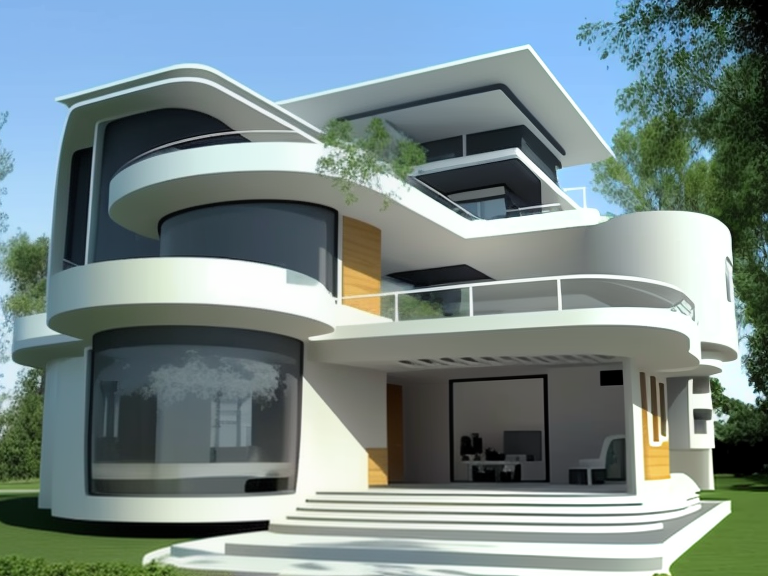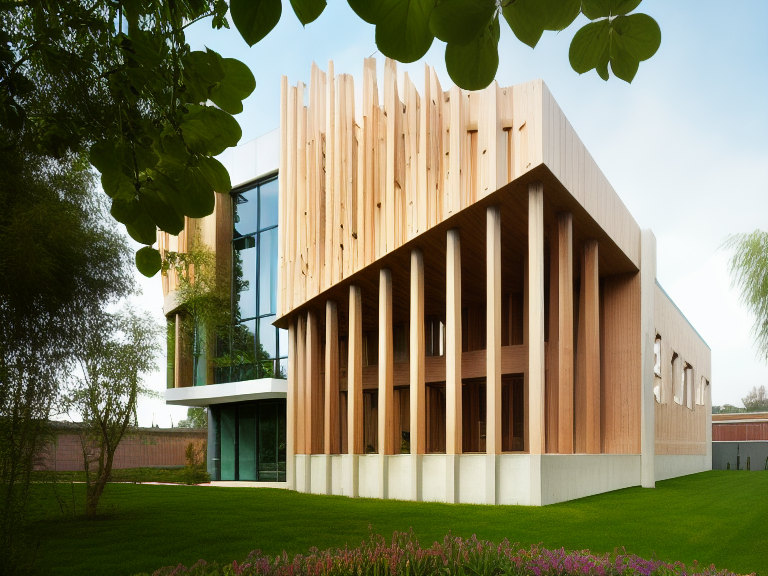The rise of smart homes marks a significant shift in the way we live, interact, and experience our living spaces. This convergence of technology and architecture has led to the development of intelligent living spaces that adapt to our needs, enhancing convenience, comfort, and sustainability. With voice-controlled automation, energy-efficient systems, and advanced security systems, smart homes are redefining the concept of home. As technology continues to advance, we can expect even more innovative solutions that reshape the future of living spaces. As we explore the intersection of technology and architecture, we uncover the vast possibilities that await us.
The Evolution of Smart Home Technology
As the boundaries between technology and architecture continue to blur, the concept of smart home technology has undergone a remarkable transformation since its inception in the 1960s, gradually shifting from a futuristic fantasy to a tangible reality. From the early experiments with home automation to the current era of seamless integration, smart home technology has come a long way. One of the key enablers of this transformation has been the widespread adoption of home networking technologies. The proliferation of Wi-Fi, Bluetooth, and other wireless protocols has enabled the creation of a connected ecosystem, where devices and systems can communicate with each other effortlessly.
This has paved the way for the development of sophisticated smart home systems that can learn and adapt to the preferences of their occupants. The rapid pace of tech adoption has also played a significant role in driving the growth of the smart home market. As consumers become increasingly comfortable with the idea of automation and connectivity, they are more willing to invest in smart home devices and systems. This, in turn, has driven innovation and encouraged manufacturers to develop more affordable and user-friendly products. Today, smart home technology is no longer a niche concept, but a mainstream phenomenon that is redefining the way we live and interact with our living spaces.
Designing Intelligent Living Spaces
With the technological foundation in place, architects and designers are now focusing on crafting intelligent living spaces that seamlessly integrate smart home technology into the built environment. This fusion of technology and architecture enables the creation of adaptive layouts that cater to diverse needs and lifestyles. By incorporating Universal Accessibility principles, designers can create inclusive spaces that accommodate people with disabilities, elderly individuals, and those with temporary injuries. Additionally, this approach allows for the modernization of existing structures, transforming historical buildings into innovative and accessible spaces without compromising their architectural integrity. Smart solutions such as automated lighting, voice-activated controls, and adaptive furniture enhance convenience while preserving the charm of traditional designs. As a result, both new constructions and renovations can benefit from the seamless integration of technology to improve quality of life for all occupants.
Intelligent living spaces are designed to be flexible and responsive, adapting to the occupants' preferences and habits. For instance, smart lighting systems can adjust brightness and color based on the time of day, ambient light, and individual preferences. Additionally, adaptive layouts can be reconfigured to accommodate different activities, such as converting a living room into a home office or a yoga studio.
The integration of smart home technology also enables real-time monitoring and optimization of energy consumption, water usage, and waste management. This synergy between technology and architecture enables the creation of sustainable, efficient, and healthy living environments. As architects and designers continue to push the boundaries of innovation, the possibilities for intelligent living spaces are endless, promising a future where technology and architecture converge to enhance our daily lives.
Voice-Controlled Home Automation
Voice-controlled home automation systems, integrated into the fabric of intelligent living spaces, enable effortless management of various smart devices and appliances through simple voice commands. This innovative technology has revolutionized the way we interact with our homes, providing unparalleled convenience and flexibility. With the assistance of voice assistants, such as Alexa or Google Assistant, homeowners can effortlessly control lighting, temperature, entertainment systems, and security cameras with mere vocal instructions.
One of the most significant advantages of voice-controlled home automation is the level of personalization it offers. Users can customize their voice assistants to recognize specific commands, phrases, and even nicknames, creating a truly tailored experience. Additionally, advanced algorithms and machine learning capabilities enable voice assistants to learn and adapt to individual habits and preferences over time, further refining the smart home experience.
As smart home technology continues to evolve, voice-controlled automation is poised to play an increasingly prominent role. With the proliferation of smart devices and the Internet of Things (IoT), the potential for seamless voice control is vast. As homeowners increasingly demand greater convenience, efficiency, and personalization, voice-controlled home automation is set to become an indispensable feature of modern living. By merging technology with architecture, we are witnessing the dawn of a new era in intelligent living spaces, where voice commands hold the key to unlocking unparalleled comfort, convenience, and innovation.
Energy Efficiency in Smart Homes
Smart homes are evolving towards a more sustainable future, harnessing advanced technologies to optimize energy consumption and minimize environmental footprints. With the increasing concern about climate change, energy efficiency has become a crucial consideration in smart home design. By leveraging cutting-edge innovations, homeowners can greatly reduce their carbon footprint and create a more eco-friendly living space.
To achieve energy efficiency, smart homes are incorporating various innovative solutions, including:
- Energy Harvesting: Integrating solar panels, wind turbines, or other renewable energy sources to generate power and reduce reliance on non-renewable energy sources.
- Smart Lighting Systems: Implementing energy-efficient LED lighting that adjusts brightness and color based on natural light availability, time of day, and occupancy.
- Intelligent HVAC Control: Optimizing heating, ventilation, and air conditioning systems to minimize energy consumption while maintaining a comfortable indoor climate.
These advancements not only reduce energy consumption but also provide homeowners with real-time monitoring and control capabilities, enabling them to make data-driven decisions about their energy usage. As smart homes continue to evolve, energy efficiency will play an increasingly crucial role in shaping a sustainable future for generations to come. By embracing these innovative solutions, homeowners can greatly minimize their carbon footprint and contribute to a greener, more environmentally conscious tomorrow.
Enhancing Home Security Systems
As homeowners increasingly rely on smart technologies to manage their living spaces, the need for robust security systems that integrate seamlessly with these innovations becomes essential. Enhancing home security systems is no longer a luxury, but a necessity in today's digitally connected world. With the rise of smart homes, criminals are adapting their tactics to exploit vulnerabilities in these systems. Hence, it is vital to stay one step ahead by deploying advanced surveillance strategies that can detect and respond to emerging crime patterns.
One effective approach is to implement an integrated security system that combines traditional measures such as motion sensors and cameras with cutting-edge technologies like artificial intelligence and machine learning. This fusion enables real-time monitoring and analysis of security data, allowing homeowners to respond swiftly to potential threats. Additionally, advanced biometric authentication and encryption methods can guarantee that sensitive data remains secure.
To stay ahead of criminal activity, it is essential to analyze crime patterns and adjust security protocols accordingly. This may involve collaborating with law enforcement agencies to access crime data and stay informed about emerging trends. By leveraging these insights, homeowners can optimize their security systems to mitigate potential risks and create a safer living environment. By merging technology with innovative security strategies, homeowners can enjoy the benefits of smart living while maintaining peace of mind.
The Future of Home Entertainment
The convergence of cutting-edge technologies and innovative entertainment solutions is revolutionizing the way we experience leisure activities within the comfort of our homes. The future of home entertainment is poised to transform the way we engage with our favorite movies, TV shows, music, and video games. With the advent of Virtual Cinemas, homeowners can now enjoy immersive experiences that simulate the cinematic experience in the comfort of their own homes.
Here are three ways technology is redefining home entertainment:
- Immersive Audio: Advanced audio systems with 3D sound capabilities are creating a more immersive experience, making viewers feel like they're part of the action.
- Virtual Reality (VR) Integration: VR technology is being integrated into home entertainment systems, allowing users to step into their favorite movies and games.
- Smart Projection Systems: Advanced projection systems with 4K resolution and high dynamic range (HDR) are providing a cinematic experience like never before, with crystal-clear images and vibrant colors.
As technology continues to advance, we can expect to see even more innovative solutions that blur the lines between reality and fantasy. With the rise of smart homes, the possibilities for home entertainment are endless, and the future looks brighter than ever.
Smart Home Devices for Seniors
As the global population ages, smart home devices designed specifically for seniors are becoming increasingly important. These innovative solutions can transform living spaces into easy-to-navigate environments, enable independent daily routines, and provide a safety net of features that promote well-being and peace of mind. By exploring these benefits, we can uncover the vast potential of smart home technology in improving the quality of life for seniors.
Easy Living Spaces
By incorporating smart home devices, seniors can maintain their independence and quality of life, enjoying a safer, more comfortable, and convenient living environment. Easy living spaces are designed to promote comfort, simplicity, and independence, allowing seniors to live life to the fullest.
One key aspect of easy living spaces is the incorporation of cozy decor, which can greatly impact the ambiance and overall feel of a room. By combining smart lighting, temperature control, and entertainment systems, seniors can create a warm and inviting atmosphere that suits their mood and preferences.
To further enhance the living experience, simple organization is essential. This can be achieved through smart storage solutions, automated reminders, and voice-controlled assistants. Here are three ways smart home devices can promote easy living spaces:
- Voice-controlled assistants enable seniors to control their living environment with ease, without having to physically interact with devices.
- Smart lighting systems can be programmed to adjust brightness and color to suit different times of the day, promoting a comfortable and relaxing atmosphere.
- Automated reminders can help seniors stay on top of their schedules, medication, and appointments, reducing stress and anxiety.
Independent Daily Routines
In addition, markedly with their natural rhythms, smart home devices can be seamlessly integrated into seniors' daily routines, empowering them to maintain independence and confidence in their daily lives. By automating morning rituals, such as turning on lights, brewing coffee, and adjusting thermostat settings, seniors can start their day with ease and comfort. This integration enables them to conserve energy and focus on more important aspects of their lives. Smart home devices can also assist with personal care routines, such as reminders for medication and exercise, promoting a sense of personal freedom and autonomy. Moreover, these devices can learn and adapt to individual preferences, ensuring that daily routines are tailored to each senior's unique needs and preferences. By streamlining daily tasks and providing a sense of control, smart home devices can greatly enhance the quality of life for seniors, allowing them to live independently and confidently.
Safety Net Features
Smart home devices can also provide a safety net for seniors, offering a range of features that can help prevent accidents, detect potential health concerns, and facilitate timely interventions. These innovative solutions can greatly enhance the quality of life for seniors, providing them with the independence and confidence they need to thrive.
Some of the key safety net features of smart home devices for seniors include:
- Critical: Advanced sensors can detect falls and automatically alert caregivers, family members, or emergency services, ensuring prompt assistance in case of an emergency.
- Essential Alerts: Smart home devices can be integrated with wearable devices or mobile apps to monitor vital signs, detect anomalies, and send alerts to healthcare professionals or caregivers.
- Real-time Monitoring: Smart home devices can provide real-time monitoring of seniors' daily activities, enabling caregivers to identify potential health concerns or risks, and take proactive measures to prevent accidents.
Integrating Sustainability Features
Integrating Sustainability Features
Nearly 80% of a building's carbon footprint is attributed to its operational energy consumption, making the integration of sustainable features an essential aspect of smart home design. As the world shifts towards a more eco-conscious lifestyle, architects and builders are incorporating innovative sustainable solutions into smart home designs. One such feature is the incorporation of green roofs, which not only provide insulation and reduce energy consumption but also create habitats for local wildlife. These living roofs also help to mitigate urban heat island effects, improving air quality and reducing the urban heat island effect.
In addition to green roofs, eco-friendly materials are being used in smart home construction. Sustainably sourced materials, such as reclaimed wood and low-VOC paints, reduce the environmental impact of the building process. These materials also promote a healthier indoor environment, free from harsh chemicals and toxins. Moreover, smart homes are being designed with energy-efficient systems, such as solar panels and rainwater harvesting systems, to minimize reliance on non-renewable energy sources. By integrating these sustainable features, smart homes are not only reducing their carbon footprint but also providing a healthier and more comfortable living space for occupants. As the demand for sustainable living continues to grow, the integration of eco-friendly features will play an increasingly important role in smart home design.
The Role of Artificial Intelligence
Beyond the domain of sustainability, artificial intelligence (AI) is revolutionizing the smart home landscape, enabling seamless interactions between occupants and their living spaces. AI-powered systems learn occupants' habits and preferences, anticipating their needs and adjusting the environment accordingly. This harmonious fusion of technology and architecture redefines the concept of home, making it more comfortable, efficient, and responsive.
The integration of AI in smart homes raises important questions about AI ethics, underscoring the necessity for responsible innovation. As AI systems become more pervasive, it is crucial to guarantee they are designed with human-centered principles, prioritizing occupants' well-being and privacy.
The benefits of AI in smart homes are multifaceted:
- Personalized experiences: AI-driven systems tailor the environment to individual preferences, creating a unique and comfortable living space.
- Energy efficiency: AI optimizes energy consumption, reducing waste and minimizing environmental impact.
- Intuitive control: AI-powered interfaces enable effortless control, allowing occupants to focus on what matters most – living their lives.
Overcoming Smart Home Challenges
As AI-powered smart homes become increasingly prevalent, a new set of challenges emerges, threatening to hinder the widespread adoption of these innovative living spaces. One of the primary hurdles is user adoption, as many consumers remain skeptical about the benefits of smart home technology. To overcome this, manufacturers must prioritize user-friendly interfaces and intuitive design, ensuring that smart home systems are accessible to a broad audience.
Another significant challenge is system interoperability, where disparate devices and systems struggle to communicate seamlessly. This fragmentation can lead to frustration and disillusionment among users, ultimately hindering the growth of the smart home market. To address this, industry stakeholders must work together to establish universal standards and protocols, enabling devices from different manufacturers to integrate effortlessly.
Furthermore, concerns surrounding data privacy and security must be addressed to instill confidence in potential adopters. Implementing robust encryption, secure data storage, and transparent data handling practices can help alleviate these concerns. By tackling these challenges, the smart home industry can overcome the obstacles that stand in the way of widespread adoption, paving the way for a future where technology and architecture converge in harmony.
Frequently Asked Questions
Can I Install Smart Home Devices in an Existing Home?
Installing smart home devices in an existing home can be a viable option, but it's important to take into account the potential challenges. Retrofitting an existing home with smart technology can be complex, especially when working around existing wiring obstacles. It's essential to evaluate the current infrastructure and identify potential hurdles before starting on the installation process. A thorough assessment will help mitigate potential issues, ensuring a seamless integration of smart devices into your existing home.
Are Smart Homes More Expensive Than Traditional Homes?
As the old adage goes, 'you get what you pay for.' When it comes to smart homes, the cost comparison is an important factor to take into account. While smart homes may seem like a luxury, the added features and innovative technology come at a premium. The inclusion of luxury features such as smart thermostats, automated lighting, and advanced security systems can increase the overall cost. However, the long-term benefits and potential energy savings can make the investment worthwhile for those seeking a cutting-edge living experience.
Can I Control My Smart Home With a Single Device?
Controlling your smart home with a single device is now a reality. Gone are the days of juggling multiple remotes and apps. With advancements in voice commands and gesture recognition, you can seamlessly manage your smart home ecosystem. Imagine effortlessly adjusting lighting, temperature, and entertainment systems with mere voice commands or subtle hand gestures. This unified control experience is redefining the smart home landscape, offering unparalleled convenience and efficiency.
Are Smart Homes Vulnerable to Cyber Attacks?
Like a delicate ecosystem, smart homes rely on interconnected devices, making them susceptible to cyber threats. As smart homes generate vast amounts of data, they become attractive targets for hackers. Network breaches can occur when security protocols are inadequate or outdated, allowing unauthorized access to sensitive information. It is essential to implement robust security measures, such as end-to-end encryption and secure authentication, to safeguard against cyber attacks and protect the integrity of smart home systems.
Can I Customize My Smart Home to Fit My Personal Needs?
With personalized automation, smart homes can be tailored to cater to individual lifestyles. By integrating technology with daily routines, homeowners can create a bespoke living experience that mirrors their unique needs and preferences. From customized lighting and temperature control to tailored entertainment systems, smart homes can adapt to accommodate diverse lifestyles, ensuring a seamless and convenient living experience that enhances daily life.



